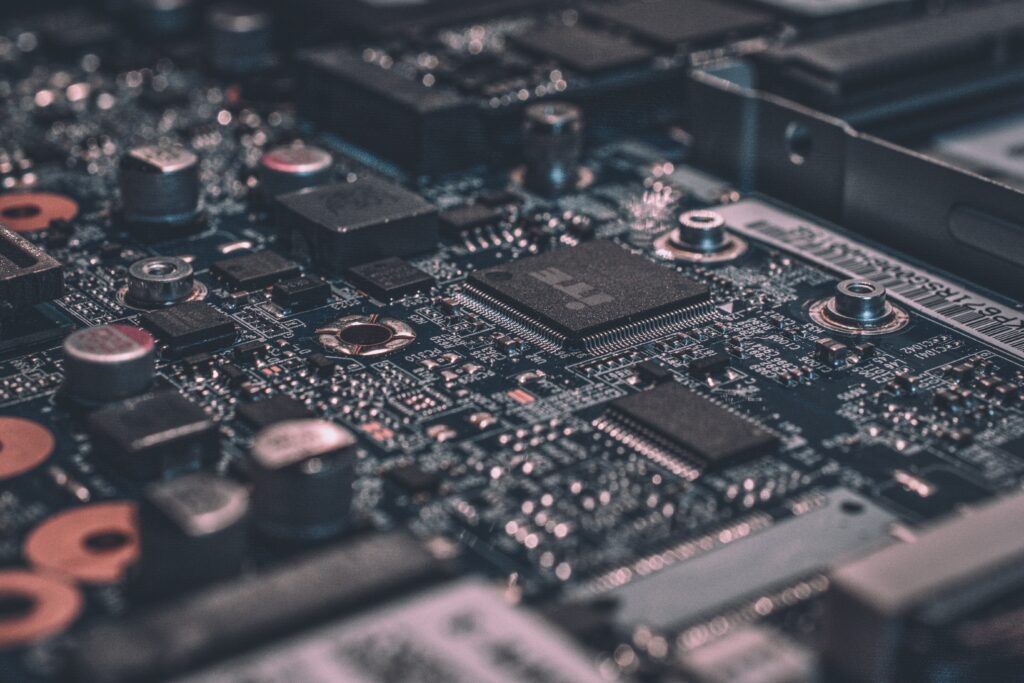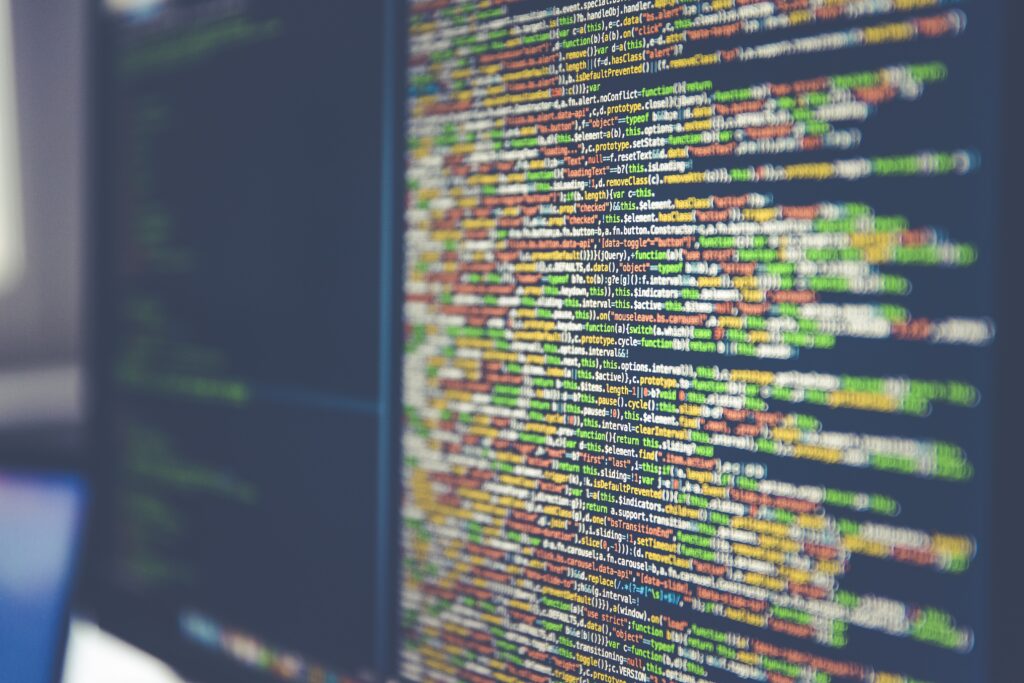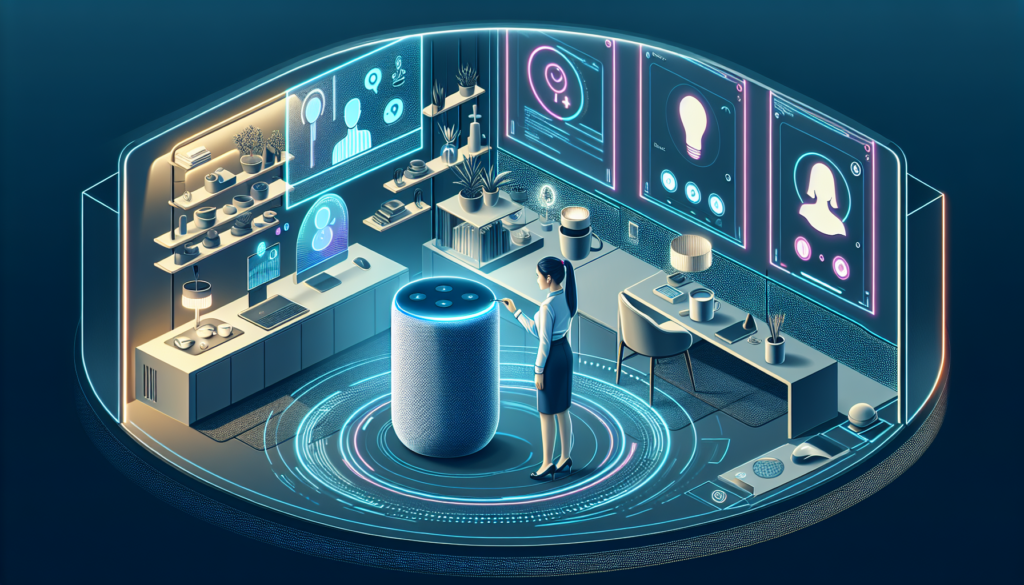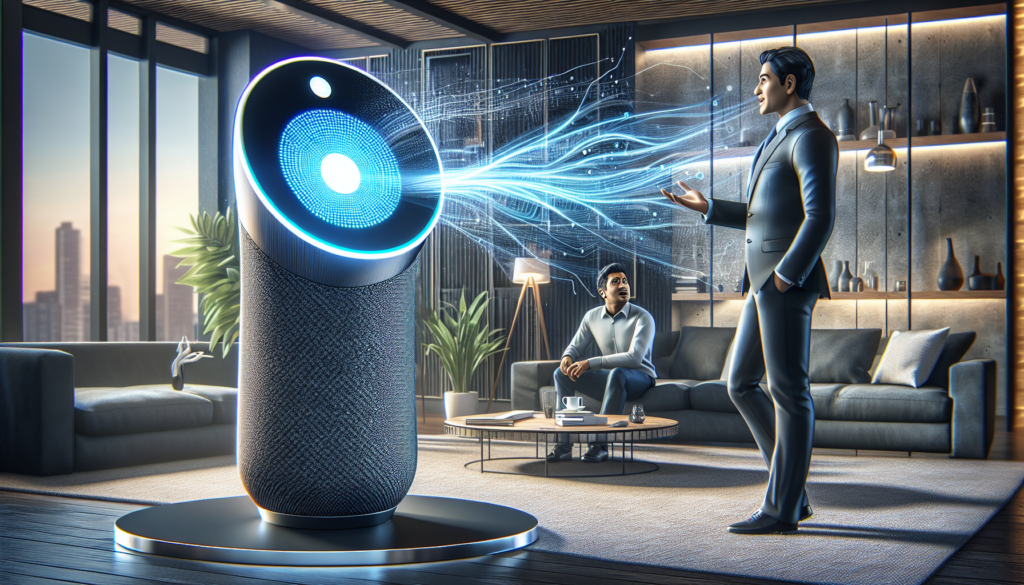Imagine a world where your every need and desire is anticipated and fulfilled with just a simple voice command. A world where technology seamlessly blends into your everyday life, making tasks easier, faster, and more efficient. This is the future of personal assistants, where smart assistant technology is transforming the way we live. From managing our schedules and controlling our smart homes, to answering our questions and providing entertainment, these intelligent virtual companions are revolutionizing the way we interact with technology. In this article, we will explore the exciting advancements in smart assistant technology and how it is reshaping our lives for the better. So sit back, relax, and let us take you on a journey into the future of personal assistants.
Overview of Smart Assistant Technology
Smart Assistant Technology has revolutionized our daily lives, providing us with personalized and convenient assistance at our fingertips. From helping us control our homes to answering our questions and managing our schedules, smart assistants have become an integral part of our digital ecosystem. In this article, we will explore the definition, evolution, and current state of smart assistant technology, as well as delve into how these assistants work and their various applications. We will also discuss the benefits, challenges, and potential future developments of smart assistant technology, and examine its impact on daily life and the ethical considerations associated with its use.
Definition of Smart Assistant Technology
Smart Assistant Technology refers to a digital assistant that uses artificial intelligence and natural language processing to provide users with information, perform tasks, and interact with other devices. Common examples of smart assistants include Amazon’s Alexa, Apple’s Siri, Google Assistant, and Microsoft’s Cortana. These assistants are typically activated by voice commands and can perform a wide range of functions, such as answering questions, playing music, setting reminders, and controlling smart home devices. They can be accessed through various devices, including smartphones, smart speakers, and wearable devices.
Evolution of Smart Assistant Technology
Smart Assistant Technology has come a long way since its inception. The concept of a virtual assistant can be traced back to the 1960s, with the introduction of the computer-based assistant ELIZA. However, it wasn’t until the early 2010s that smart assistants gained widespread popularity with the introduction of Siri on the iPhone 4S in 2011. Since then, smart assistants have evolved to become more intelligent, responsive, and integrated with other technologies. They have also become more accessible, with the availability of affordable smart speakers and the integration of smart assistant features into smartphones and other devices.
Current State of Smart Assistant Technology
Today, smart assistants have become a ubiquitous presence in our lives. With the advancements in artificial intelligence and natural language processing, these assistants have become more conversational and capable of understanding complex queries. They can now perform a wide range of tasks, from providing weather updates and managing our calendars to controlling our smart home devices and ordering groceries. Smart assistants have also become more integrated with other technologies, such as the Internet of Things (IoT), allowing us to control and monitor various devices with our voice commands. The current state of smart assistant technology is characterized by constant innovation and improvements, with tech companies continuously enhancing the capabilities and features of their respective smart assistants.
How Smart Assistants Work
Smart assistants rely on a combination of technologies to understand and respond to user commands. These technologies include voice recognition, natural language processing, artificial intelligence, and the Internet of Things. Let’s explore each of these components in more detail.
Voice Recognition
Voice recognition is at the core of smart assistant technology. This technology enables smart assistants to convert spoken words into text, allowing them to understand and interpret user commands. Advanced algorithms and machine learning models are used to analyze and recognize different speech patterns, accents, and languages. The accuracy of voice recognition has significantly improved over the years, making it easier for users to interact with their smart assistants and have their commands accurately understood.

Natural Language Processing
Natural language processing (NLP) is another crucial component of smart assistant technology. NLP enables smart assistants to understand the context, meaning, and intent behind user commands. This technology allows assistants to process and analyze human language, taking into account factors such as grammar, syntax, and semantics. Through NLP, smart assistants can identify keywords, extract relevant information, and generate appropriate responses. This capability allows for more natural and conversational interactions between users and their smart assistants.
Artificial Intelligence
Artificial intelligence (AI) plays a vital role in the functioning of smart assistants. AI algorithms and models enable smart assistants to learn and adapt based on user behavior and preferences. They can analyze large volumes of data to improve their understanding, accuracy, and responsiveness. Machine learning and deep learning techniques are employed to train smart assistants to recognize patterns, make predictions, and continuously enhance their capabilities. AI also enables smart assistants to adapt to individual user preferences, offering personalized recommendations and assistance.
Internet of Things (IoT)
The Internet of Things (IoT) is a network of interconnected devices that communicate and exchange data. Smart assistants leverage IoT to connect and control various devices in our homes and offices. Through voice commands, smart assistants can interact with IoT-enabled devices such as smart speakers, thermostats, lights, and security systems. This integration allows users to conveniently manage and automate their surroundings, making their homes and workplaces smarter and more efficient.
Applications of Smart Assistants
Smart assistants have a wide range of applications, both in our personal lives and in businesses. Let’s explore some of the key areas where smart assistants have made a significant impact.
Smart Homes
One of the most popular applications of smart assistant technology is in the realm of smart homes. Smart assistants can control and manage various aspects of our homes, including lighting, temperature, security, and entertainment systems. With a simple voice command, users can turn on/off lights, adjust thermostats, lock doors, play music, or even control kitchen appliances. Smart assistants can also provide real-time information about weather conditions, traffic updates, and news tailored to the user’s preferences.

Virtual Assistants for Individuals
Smart assistants serve as virtual personal assistants, helping individuals manage their daily tasks and schedules. They can set reminders, schedule appointments, send messages, or make phone calls on behalf of the user. Smart assistants can also provide information and recommendations based on the user’s preferences and past interactions. For example, they can suggest nearby restaurants, recommend movies or TV shows to watch, or provide personalized news updates.
Virtual Assistants for Businesses
In the business world, smart assistants have proven to be valuable tools for increased productivity and efficiency. They can assist with tasks such as scheduling meetings, managing calendars, sending emails, and conducting research. Smart assistants can also help businesses provide better customer service by answering common queries, processing orders, and directing customers to the appropriate departments. The ability to integrate smart assistants with various business applications and tools further enhances their usefulness in a professional context.
Benefits of Smart Assistant Technology
Smart assistant technology offers numerous benefits that enhance our daily lives and improve our overall productivity and efficiency. Let’s explore some of the key advantages of using smart assistants.
Convenience and Efficiency
Smart assistants provide us with a convenient and efficient way to access information and perform tasks. With just a voice command, we can get instant answers to our questions, set reminders, and control various devices. Smart assistants eliminate the need for manual input, saving us time and effort in our daily routines. Whether it’s checking the weather forecast, ordering groceries, or playing music, smart assistants enable us to accomplish tasks quickly and effortlessly.
Increased Productivity
By handling routine and time-consuming tasks, smart assistants free up our time to focus on more important and meaningful activities. They can manage our calendars, send emails, and perform other administrative tasks, allowing us to be more productive and efficient in our work and personal lives. Smart assistants can also help streamline workflows in businesses, automating repetitive tasks and enabling employees to concentrate on more strategic and creative aspects of their roles.

Personalized Assistance
Smart assistants are designed to understand our preferences, habits, and behaviors, offering personalized assistance tailored to our needs. They can learn from our interactions, adapt to our preferences, and make recommendations based on our previous choices. Whether it’s suggesting a new recipe, recommending a movie, or providing personalized news updates, smart assistants strive to deliver a personalized experience that caters to our individual interests and preferences.
Accessibility and Inclusivity
Smart assistants have the potential to bridge the digital divide and make technology more accessible and inclusive. By relying on voice commands, smart assistants eliminate the need for manual input, making them more accessible to individuals with disabilities or those who struggle with traditional user interfaces. Smart assistants can assist individuals with impaired mobility, vision, or hearing, enabling them to control their surroundings and access information with ease.
Challenges and Concerns
While smart assistant technology offers numerous advantages, there are also several challenges and concerns that need to be addressed. Let’s explore some of the key challenges associated with the use of smart assistants.
Privacy and Data Security
Privacy and data security are major concerns when it comes to smart assistant technology. Smart assistants record and store user interactions, raising concerns about the privacy and security of personal information. It is crucial for manufacturers and service providers to ensure robust security measures and data protection protocols to safeguard user privacy. Transparent data collection and consent processes should be implemented, giving users control over their data and enabling them to make informed decisions about its usage.
Reliability and Trust
As smart assistants become more integrated into our lives, it is essential for them to be reliable and trustworthy. Users need to have confidence that their smart assistants will accurately understand their commands, provide reliable information, and perform tasks as intended. Reliability issues, such as misinterpretation of voice commands or inaccurate responses, can undermine user trust and result in frustration. Ongoing improvements in voice recognition, natural language processing, and AI algorithms are necessary to enhance the reliability and trustworthiness of smart assistants.

Ethical Considerations
The use of smart assistant technology raises various ethical considerations. For instance, there are questions surrounding the collection and use of personal data by smart assistants. Users need to be aware of how their data is being used and for what purposes. Additionally, there is a need to address biases in smart assistant algorithms that may inadvertently discriminate against certain individuals or perpetuate existing biases in society. Ethical guidelines and regulations should be established to ensure the responsible and ethical use of smart assistant technology.
Integration with Other Technologies
Smart assistant technology can be seamlessly integrated with other emerging technologies, further enhancing its capabilities and impact. Let’s explore some of the key technologies that can be integrated with smart assistants.
Internet of Things (IoT)
Smart assistants and the Internet of Things (IoT) go hand in hand. By connecting smart assistants to IoT-enabled devices, users can control and monitor various aspects of their environment using voice commands. For example, users can adjust the temperature, turn on/off lights, or lock doors by simply speaking to their smart assistant. The integration of smart assistants with IoT enhances convenience and automation in our daily lives.
Artificial Intelligence (AI)
Smart assistants heavily rely on artificial intelligence (AI) to interpret user commands and provide intelligent responses. AI algorithms and models enable smart assistants to understand context, extract relevant information, and generate appropriate responses. The integration of AI technologies with smart assistants can further enhance their ability to understand and interact with users, providing more accurate and personalized assistance.
Machine Learning
Machine learning plays a crucial role in the development and improvement of smart assistant technology. By analyzing large volumes of data, machine learning algorithms can train smart assistants to recognize patterns, adapt to user preferences, and continuously enhance their capabilities. Machine learning algorithms enable smart assistants to learn from user behavior and feedback, improving their accuracy and responsiveness over time.

Augmented Reality (AR) and Virtual Reality (VR)
The integration of smart assistant technology with augmented reality (AR) and virtual reality (VR) can create immersive and interactive experiences. Smart assistants can provide users with real-time information and guidance through AR overlays or virtual environments. For example, a smart assistant can guide users through a step-by-step process using AR instructions or provide virtual assistance in remote collaboration scenarios. The combination of smart assistants with AR and VR technologies opens up new possibilities for interactive and engaging experiences.
Potential Future Developments
Smart assistant technology is continuously evolving, and there are several exciting future developments on the horizon. Let’s explore some of the potential advancements that we can expect to see in the future.
Natural Language Understanding
Future smart assistants are expected to have advanced natural language understanding capabilities. They will be able to understand and interpret complex queries, allowing for more natural and conversational interactions. Improved natural language understanding will enable smart assistants to provide more accurate responses and better comprehend user intent.
Emotional Intelligence
One of the future developments in smart assistant technology is the integration of emotional intelligence. Smart assistants will be able to recognize and respond to emotions, adapting their tone and responses accordingly. This capability will enable more empathetic and human-like interactions, making smart assistants feel more like a trusted companion.
Enhanced Personalization
Future smart assistants will offer even more personalized experiences based on user preferences, habits, and context. They will be able to anticipate user needs and proactively offer recommendations and assistance. Enhanced personalization will further enhance the convenience and usefulness of smart assistants in our daily lives.
Interoperability
Interoperability is a key future development in smart assistant technology. Smart assistants will become more compatible with different platforms, devices, and services, enabling seamless integration and cross-functionality. This interoperability will allow users to access and control various devices and services through a single, unified smart assistant interface.
Impact on Daily Life
Smart assistant technology has a profound impact on our daily lives, transforming the way we interact with our environment and perform everyday tasks. Let’s explore some of the key ways in which smart assistants have influenced our daily routines.
Smart Home Automation
Smart assistants have revolutionized the concept of home automation. Through voice commands, users can control and manage various aspects of their homes, such as lighting, temperature, security, and entertainment systems. Smart home automation enhances convenience, energy efficiency, and security, making our homes more comfortable and efficient.
Voice-Activated Appliances and Devices
Smart assistants have enabled voice activation for a wide range of appliances and devices. From smart speakers and TVs to kitchen appliances and home security systems, voice-activated devices have become the norm. Voice commands eliminate the need for physical interaction with devices, making them more accessible, user-friendly, and intuitive.
Virtual Personal Assistants
Smart assistants serve as virtual personal assistants, helping us manage our schedules, tasks, and reminders. They can set appointments, send messages, make phone calls, and even assist with online shopping. Virtual personal assistants streamline our daily routines, improve productivity, and ensure we stay organized and on top of our responsibilities.
Smart Workplaces
In the workplace, smart assistants have the potential to enhance productivity and efficiency. They can assist with tasks such as scheduling meetings, managing calendars, and conducting research. Smart assistants can also streamline collaboration by providing real-time information and facilitating communication among team members. Smart workplaces leverage the capabilities of smart assistants to create a more productive and connected work environment.
Education and Learning
Smart assistants have also made an impact on education and learning. They can serve as interactive and engaging tutors, providing students with personalized assistance and guidance. Smart assistants can answer questions, provide explanations, and offer additional resources to support learning. Their ability to adapt to individual learning styles and preferences makes them valuable tools for personalized education.
Ethical Considerations of Smart Assistant Technology
The widespread adoption of smart assistant technology raises several ethical considerations that need to be addressed. Let’s delve into some of the key ethical considerations associated with the use of smart assistants.
Privacy and Data Security
Privacy and data security are major ethical concerns when it comes to smart assistant technology. Users need to have confidence that their personal information is being handled responsibly and securely. It is crucial for manufacturers and service providers to implement robust security measures and data protection protocols to safeguard user privacy. Transparency in data collection and consent processes is essential, ensuring that users have control over their data and can make informed decisions about its usage.
Ethical Use of Collected Data
The collection of user data by smart assistants raises questions about its ethical use. The data collected should be used responsibly and for legitimate purposes. Manufacturers and service providers should be transparent about how user data is being used and ensure that it is not exploited or shared without proper consent. Clear guidelines and regulations need to be in place to govern the ethical use of collected data and prevent its abuse.
Impacts on Employment
The increasing adoption of smart assistants has raised concerns about the potential impacts on employment. As smart assistants become more capable and autonomous, there is a possibility of job displacement in certain industries. It is important to consider the potential consequences and find ways to mitigate the impacts on employment. This may involve reskilling and upskilling programs to prepare individuals for new roles and opportunities in the smart assistant era.
Inclusivity and Accessibility
Inclusivity and accessibility are crucial ethical considerations when developing and deploying smart assistant technology. It is essential to ensure that smart assistants are accessible to individuals with disabilities and do not create barriers or reinforce existing inequalities. Smart assistants should be designed with diverse user needs in mind, considering factors such as impaired mobility, vision, or hearing. By prioritizing inclusivity and accessibility, smart assistant technology can contribute to a more equitable and inclusive digital ecosystem.
Conclusion
Smart assistant technology has transformed the way we interact with digital devices, bringing personalized and convenient assistance into our lives. From controlling our homes to managing our schedules and answering our questions, smart assistants have become indispensable tools. While they offer numerous benefits, there are also challenges and ethical considerations associated with their use. Future developments in smart assistant technology hold the promise of even more intuitive and personalized experiences. As we continue to embrace smart assistants, it is essential to address privacy concerns, ensure ethical use of collected data, and consider the potential impacts on employment and inclusivity. By doing so, we can harness the full potential of smart assistant technology and create a more connected and inclusive future.
